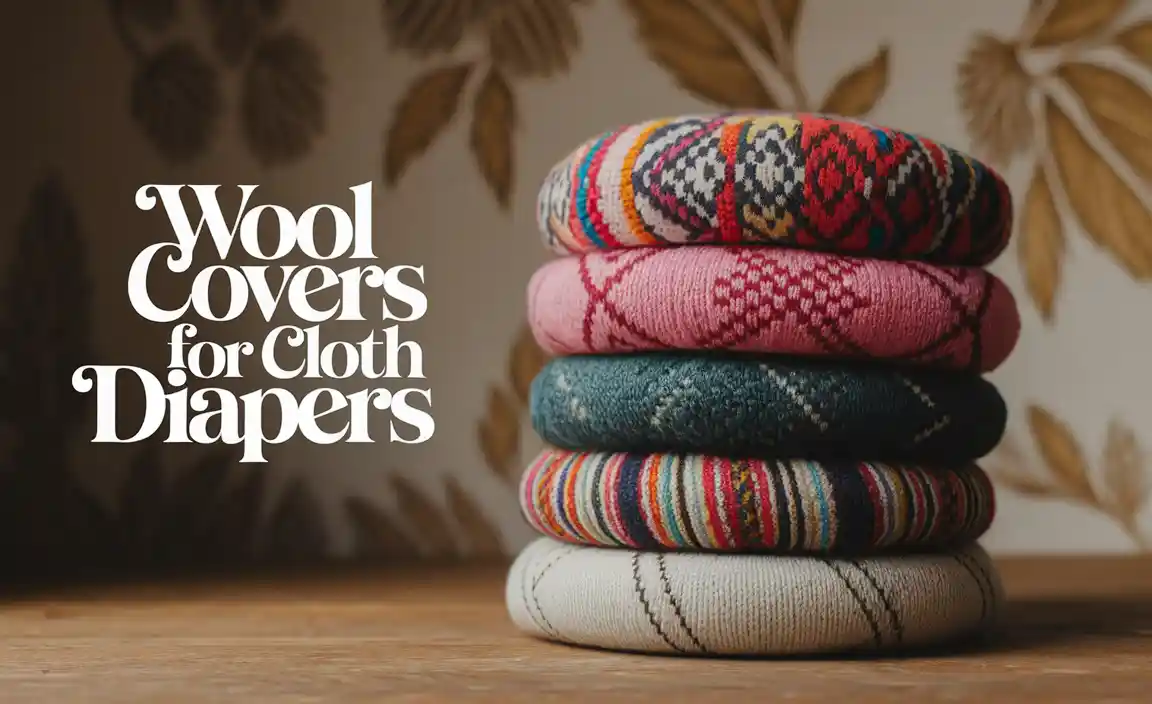Adult diapers for seniors living alone offer essential comfort and security, allowing for greater independence and peace of mind. Choosing the right product involves understanding absorbency, fit, and skin health, ensuring seniors can maintain their dignity and quality of life with confidence.
Living independently as a senior is a wonderful goal, and it’s entirely achievable with the right support. Sometimes, minor health changes can make daily life a little more challenging. For many, little leaks or the worry of them can be a significant concern. This is where adult diapers come in, acting as a discreet and effective solution to provide comfort and confidence. We’re here to guide you through understanding these products so you or your loved one can live every day with ease.
Understanding the Need for Adult Diapers
It’s completely normal for changes to happen as we age. Incontinence, which is the involuntary loss of bladder or bowel control, can affect many seniors. It’s not a sign of weakness or something to be ashamed of. Factors like weakened pelvic floor muscles, certain medical conditions, medications, or even surgical recovery can contribute to it. For seniors living alone, managing incontinence without help can be particularly daunting. The fear of accidents can lead to social withdrawal, anxiety, and a reduced quality of life. Adult diapers are designed to address these specific challenges, offering a reliable way to stay dry, comfortable, and confident throughout the day and night. They are a tool that empowers seniors to continue living their lives to the fullest, without constant worry.
Types of Adult Diapers and Their Features
Navigating the world of adult incontinence products can feel overwhelming at first, but understanding the different types will help you find the best fit. The primary goal is to ensure comfort, discretion, and adequate protection against leaks.
Briefs (Tab-Style Diapers)
These are the most traditional form of adult diaper, featuring adhesive tabs on the sides that fasten to the front. They offer a high level of absorbency and are often recommended for moderate to heavy incontinence.
Pros:
High absorbency, suitable for heavy leaks and overnight use.
Secure fit with adjustable tabs.
Easier for caregivers to change, especially for individuals with mobility issues.
Often come with wetness indicators.
Cons:
Can be bulkier under clothing.
Tabs might be challenging for seniors to fasten themselves if they have dexterity issues.
Can be more expensive than other options.
Protective Underwear (Pull-Up Style)
Designed to look and feel more like regular underwear, these garments simply pull on and off. They are ideal for seniors who are more mobile and can manage their own personal care hygiene.
Pros:
Discreet and feel like regular underwear.
Easy for active seniors to use independently.
Comfortable and allow for a full range of motion.
Available in various absorbency levels.
Cons:
May not offer the same level of absorbency as tab-style briefs for very heavy incontinence.
Changing can be more difficult for those with limited mobility or if a caregiver is assisting.
Can be slightly less secure than tab-style briefs if not fitted properly.
Pads and Liners
These are worn inside regular underwear and are best for light to moderate bladder leakage. They are a good option for those who only experience occasional drips or small leaks.
Pros:
Very discreet and comfortable.
Cost-effective for light incontinence.
Easy to change and dispose of.
Available in various sizes and absorbency levels.
Cons:
Not suitable for heavy incontinence or bowel leaks.
Can shift during activity, potentially leading to leaks.
Require regular underwear to be worn.
Belted Undergarments
These consist of an absorbent pad held in place by a reusable elastic belt. They offer a good compromise between the security of briefs and the breathability of underwear.
Pros:
Breathable and less bulky than briefs.
Easier to change for some individuals compared to pull-ups.
Good absorbency for moderate to heavy needs.
Cons:
The belt can sometimes be felt.
May require some dexterity to position correctly.
Key Factors for Choosing the Right Adult Diaper
Selecting the perfect adult diaper involves more than just picking a product off the shelf. For seniors living alone, the emphasis is on ease of use, comfort, and maximum protection to foster independence.
Absorbency Level
This is perhaps the most crucial factor. Products are typically rated for light, moderate, heavy, or overnight (maximum) absorbency.
Light: For minor drips and leaks.
Moderate: For more frequent but smaller leaks.
Heavy: For significant leaks and those who may have accidents.
Overnight/Maximum: For extended wear and heavy or complete bladder loss.
Consider the senior’s typical daily routine and the times when leaks are most likely to occur. It’s often best to start with a moderate absorbency and adjust as needed. Over-the-counter products are widely available, but for severe incontinence, a doctor might recommend prescription-level products.
Fit and Size
A proper fit is essential for preventing leaks and ensuring comfort. Too loose, and it won’t contain leaks effectively. Too tight, and it can cause skin irritation and discomfort.
Measure: Most manufacturers provide sizing charts based on waist and hip measurements. Always check these charts.
Leg Openings: Ensure the leg cuffs (if applicable) create a snug seal around the thighs without cutting into the skin.
Comfort: The material should feel soft against the skin. Elastic waistbands and leg gathers contribute to a better fit.
Skin Health and Material
Seniors living alone need products that are gentle on the skin to prevent issues like diaper rash or pressure sores. Look for diapers made from breathable materials.
Breathability: Breathable side panels allow air to circulate, which helps keep the skin dry and reduces the risk of irritation.
Odor Control: Many modern adult diapers include features to neutralize odor, providing an extra layer of confidence.
Hypoallergenic Materials: If the senior has sensitive skin, look for products made with hypoallergenic materials.
Ease of Use for Independent Living
When a senior lives alone, the product needs to be manageable for them personally.
For Mobile Seniors: Pull-up style underwear is often the easiest to manage, mimicking regular underwear.
For Less Mobile Seniors: Tab-style briefs might require assistance, but some designs are easier to manage with practice, and clear instructions can help. For some, products that can be changed while standing or sitting might be preferred.
Discreetness and Comfort Under Clothing
Discretion is a major concern for many seniors wanting to maintain their dignity.
Thinness: Look for products that are thinner and less bulky, especially if the senior wants to wear them under everyday clothing without it being noticeable.
Material Feel: Softer materials feel more like cloth and are less likely to rustle.
| Diaper Type | Best For | Pros | Cons | Ease of Use (Self) |
|---|---|---|---|---|
| Briefs (Tab-Style) | Moderate to heavy incontinence, overnight use | High absorbency, secure fit, adjustable tabs | Can be bulky, tabs require dexterity | Can be challenging without assistance |
| Protective Underwear (Pull-Up) | Light to moderate incontinence, active seniors | Discreet, feels like underwear, easy to pull on/off | Less absorbent than briefs for heavy leaks | Very easy |
| Pads/Liners | Light leakage, occasional drips | Very discreet, cost-effective, easy to change | Not for heavy leaks or accidents | Easy |
| Belted Undergarments | Moderate to heavy incontinence, preference for breathability | Breathable, easier to change than pull-ups for some, good absorbency | Belt can be felt, requires some positioning | Moderate |
Practical Tips for Seniors Living Alone
Living alone means prioritizing convenience and reliable solutions. Here are some practical tips to make managing incontinence with adult diapers as stress-free as possible.
Setting Up a Changing Area
Having a designated, comfortable space for changing can make a big difference.
Location: Choose a private and easily accessible space, like a bathroom.
Supplies: Keep all necessary items within easy reach:
New diaper
Wipes (unscented, for sensitive skin)
Gloves (disposable, for hygiene)
Cream or barrier for skin protection (if recommended)
A small, discreet disposal bag or a small trash bin.
Comfort: Ensure good lighting and a comfortable temperature. A small stool can be helpful if needed.
Proper Changing Technique
Knowing how to change the diaper efficiently and hygienically is key, especially when doing it alone.
1. Wash hands thoroughly before starting.
2. Remove soiled diaper: Unfasten tabs gently. If it’s a pull-up, slide it down the legs. Fold the soiled diaper inwards to contain any mess.
3. Cleanse the skin: Use gentle wipes to clean the skin completely. For seniors living alone, using a long-handled sponge or cloth might be helpful for reaching the back.
4. Apply barrier cream: If recommended by a doctor, apply a thin layer of barrier cream to protect the skin.
5. Put on new diaper: For briefs, slide the back of the diaper under the senior. Bring the front up between the legs. Fasten the tabs securely but comfortably. For pull-ups, if the senior can stand, they can pull it up like underwear.
6. Dispose of soiled diaper: Fold it securely and place it in a sealed bag before discarding it in the trash. Avoid flushing diapers, as they can block plumbing.
7. Wash hands again thoroughly.
Maintaining Skin Health
Preventing skin breakdown is crucial for comfort and preventing infections.
Regular Changes: Don’t wait until the diaper is full. Change it promptly after a bowel movement or when it feels soiled or wet.
Gentle Cleaning: Always use mild, fragrance-free wipes or a gentle cleanser. Pat the skin dry; don’t rub.
Barrier Creams: Products containing zinc oxide or petroleum jelly can create a protective layer against moisture. Consult with a healthcare professional for the best product.
Air Time: If possible, allow the skin to air out for a few minutes between changes.
Choosing the Right Products for Travel
Seniors living alone may still enjoy travel, and adult diapers can be a great aid.
Absorbency: Opt for higher absorbency products, especially for long journeys, to minimize changes.
Discreetness: Choose thinner options that are less noticeable under clothing.
Portability: Pack more diapers than you think you’ll need. Travel packs or discreet carrying bags can be useful.
Disposal Bags: Carry small, sealable bags for discreet disposal when facilities are not readily available.
Seeking Professional Advice
Don’t hesitate to involve healthcare professionals.
Doctor Consultation: Discuss incontinence with your doctor. They can help determine the cause and recommend appropriate products or treatments.
Dermatologist: If skin irritation is a recurring problem, a dermatologist can offer solutions.
Visiting Nurse Services: For seniors living alone who need help with managing changes or skin care, a visiting nurse can provide training and support. Resources like those from the National Institutes of Health (NIH) offer extensive information on aging and health conditions.
Debunking Myths About Adult Diapers
There are many misconceptions surrounding adult diapers that can create unnecessary shame or hesitation. Let’s set the record straight.
Myth: Adult diapers are only for people who are completely incapacitated.
Fact: Incontinence can affect people of all activity levels, from those with a few occasional leaks to those with more severe issues. Adult diapers are for anyone who experiences involuntary leakage and wants to maintain their comfort and confidence.
Myth: Adult diapers are bulky and impossible to hide.
Fact: Modern adult diapers are designed to be much thinner and more discreet than older versions. Many offer excellent protection without adding significant bulk under clothing.
Myth: Wearing adult diapers leads to skin problems.
Fact: While poor hygiene and prolonged exposure to wetness can cause skin issues, proper use of high-quality, breathable diapers, along with good hygiene practices, actually helps protect the skin.
Myth: Adult diapers are embarrassing and a sign of losing independence.
Fact: They are a modern aid that can restore independence and confidence by managing a common health issue. Many seniors living alone find that diapers allow them to continue their routines and social activities without fear.
Myth: They are overly expensive.
Fact: While costs can vary, there are many affordable options available, and manufacturers often offer coupons or bulk discounts. Furthermore, the cost can be weighed against potential issues arising from untreated incontinence, such as skin infections or social isolation.
Resources for Support and Information
Finding reliable information and support can make a significant difference for seniors living alone and their caregivers.
Your Doctor or Healthcare Provider: They can offer personalized advice, product recommendations, and discuss underlying causes of incontinence.
Local Pharmacies and Medical Supply Stores: Staff can often provide information on different product brands and types.
Incontinence-Specific Websites: Many reputable websites offer detailed guides, product reviews, and comparison tools. Look for those affiliated with medical organizations or known brands.
Non-profit Organizations: Organizations focused on aging or specific health conditions often have resources and helplines. For instance, the Administration for Community Living (ACL) within the U.S. Department of Health and Human Services provides resources for seniors and their families.
Online Retailers: Websites like Amazon, Walmart, and specialized medical supply sites offer a vast selection with customer reviews that can be very insightful.
Conclusion
For seniors choosing to live independently, maintaining comfort and dignity is paramount. Adult diapers, when selected and used correctly, are an invaluable tool that empowers seniors to live without the constant worry of incontinence. By understanding the different types available, considering factors like absorbency and fit, and implementing practical tips for hygiene and skin care, seniors living alone can confidently navigate their daily lives.
Remember, seeking advice from healthcare professionals is always beneficial. With the right adult diaper and a supportive approach, independence and a high quality of life are well within reach. Don’t let incontinence hold you back; explore the options, find what works best, and embrace each day with comfort and assurance.
Frequently Asked Questions
Q1: How often should an adult diaper be changed?
A1: Diapers should be changed as soon as they are soiled with urine or feces. For urine, it’s generally recommended to change them every 3-4 hours, or more often if needed, to maintain skin health and comfort.
Q2: How do I know if I’m choosing the right size?
A2: Check the product packaging for a sizing chart. Measure your waist and hip circumference and compare it to the chart provided by the manufacturer. A good fit is snug but not too tight, with no gaps around the legs.
Q3: Can adult diapers cause rashes?
A3: Skin irritation and rashes can occur if the skin is consistently exposed to moisture or friction. Using breathable diapers, changing them frequently, gentle cleaning, and barrier creams can help prevent skin issues.
Q4: Are there adult diapers that don’t look like diapers?
A4: Yes, many modern adult diapers, especially protective underwear styles (pull-ups), are designed to look and feel very much like regular underwear, offering discretion under clothing.
Q5: What’s the difference between briefs and pull-ups?
A5: Briefs have tabs for fastening and are generally more absorbent, often recommended for moderate to heavy incontinence or for those who need assistance with changes. Pull-ups are worn like regular underwear and are easier for mobile individuals to use independently, typically suited for light to moderate incontinence.
Q6: Can adult diapers prevent all leaks?
A6: When properly fitted and used for the appropriate level of incontinence, adult diapers are very effective at preventing leaks. However, no product is 100% leak-proof for all situations, especially if the absorbency is exceeded or the fit is poor.
Q7: Should I talk to a doctor before buying adult diapers?
A7: It’s highly recommended to consult a doctor. They can help determine the cause of incontinence, suggest the most suitable product type and absorbency, and rule out any treatable medical conditions.






